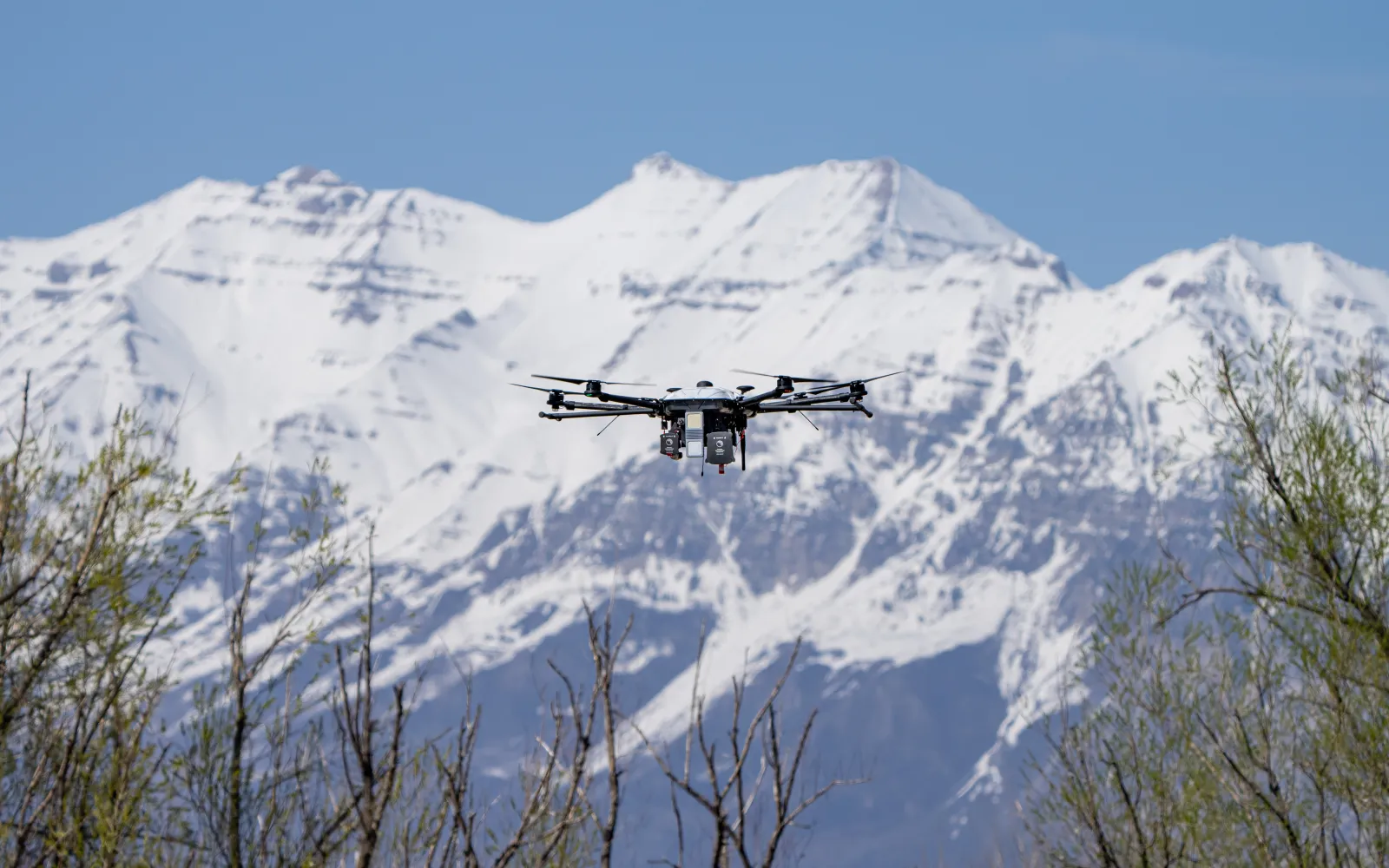
Fortem Technologies
Building systems to counter drones and keep people and infrastructure safe
Drones have become a key feature of modern warfare due to their ability to gather intelligence and carry out precision strikes with minimal risk to human operators and at relatively low cost. As defense and security officials seek to counter the threat of drones controlled by hostile foreign governments or rogue actors, DCVC-backed Fortem Technologies has emerged as the leader in AI-powered drone-hunting systems.
As covered by Scientific American, the Associated Press, and other prominent news organizations, Fortem’s DroneHunters are currently deployed in Ukraine, where they have been used to bring down Iranian-made kamikaze drones and smaller reconnaissance drones used by Russia. Fortem’s interceptor drones were also on standby at the 2022 World Cup in Qatar to guard against potential threats, as reported by the BBC.
Ahead of a recent trip to Ukraine, Fortem CEO Jon Gruen took time to speak with DCVC about the company’s technology, how the DroneHunter is performing in Ukraine, and what’s next for the company. In addition to leading Fortem, Gruen is a U.S. Navy Reserve SEAL Captain, has led Special Operations teams in Afghanistan and Iraq, and was the Operations Officer (J3) for all Special Operations Force activities in the Arabian Peninsula.
DCVC: Drones have become integral tools for intelligence gathering and combat operations. To help the United States and its allies defend against them, Fortem designs, builds, and supplies drones that can detect and capture other drones. What is the technology that underpins Fortem’s drone-hunting systems?
Gruen: Fortem’s technology is unique in that it uses high-definition small form factor radar technology, both on air interceptors and on the ground, to detect and capture other drones. The core technology, initially used to detect improvised explosive devices (IEDs) in warzones, has been refined to make it smaller and more effective for detecting and capturing drones. Our family of radars includes the R20, about the size of a pencil box, and the larger R30, about the size of a laptop. The radars, along with NVIDIA chips and edge processing, have enabled drone-on-drone defense, something that was previously nonexistent for small, fast drones.
DCVC: After Russia invaded Ukraine in 2022, Fortem supplied Kiev with its DroneHunter system, which neutralizes enemy drones by ensnaring them with nets. From the Ukrainians’ perspective, what’s the value in capturing enemy drones as opposed to destroying them?
Gruen: Fortem’s DroneHunters are being used in Ukraine to defend against Russian and Iranian drones. Our use of nets is proving to be effective and valuable — the Ukrainians have captured dozens and dozens of drones in this way. The captured drones are taken to a safe location where they can be examined and analyzed to determine their origin and technical aspects. The Ukrainians have also been particularly successful in reprogramming the captured drones and using them against the Russians, which saves the Ukrainians considerable time and money that would otherwise be spent on purchasing and programming their own drones.
DCVC: Besides Ukraine, where else are Fortem’s products in use — and what’s around the corner?
Gruen: Our systems were deployed at both the Summer Olympics in Tokyo and at the World Cup in Qatar. They’re also being used by every major US government department and agency – at airports and military bases, among other locations – as well as in NATO countries and in Asia where there are threats from China, North Korea, Russia, and Iran. Fortem has a unique advantage in the market because we build everything from the boards on up, which allows for a highly integrated, end-to-end system. We are constantly refining and improving our products, such as rolling out a new radar this summer with increased range, improving the user interface, and using AI and machine learning to train our systems to identify the exact type of drone and anticipate its behavior.
We are currently refining the F700 DroneHunter that’s deployed in Ukraine and we are developing a second drone size to take on larger drones. We are also exploring different payloads, including high-powered microwaves that can “fry” swarms of micro-drones, and even fully kinetic, explosive payloads. At the end of the day, our customers are looking for options, and so we’re constantly evolving our countermeasures to provide that flexibility.